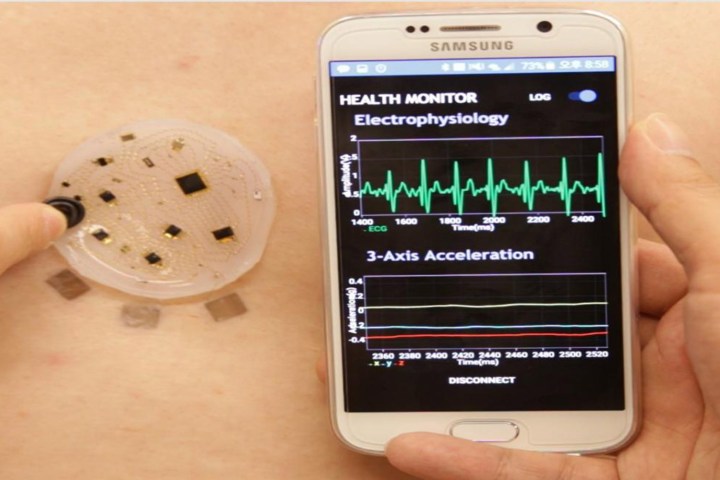
“We are seeking to build advanced, fully integrated electronic systems – biosensors, amplifiers, wireless communications, power supplies, et cetera – into platforms that have thin, soft, ‘skin-like’ properties as a fundamentally new class of wearable technology,” John Rogers, director of Northwestern University’s Center for Bio-Integrated Electronics who worked on the project, told Digital Trends. “Through intimate interfaces to the skin, these systems can reproduce clinical quality monitors for tracking health status.”
The device Rogers and his team constructed uses soft silicone encasing sensors and small wires, enabling it to stretch, flex, and conform to the body without breaking. By compacting the components into a patch that’s 1.5 inches in diameter, it can fit inconspicuously under clothing. And where previous devices rely on flat sensors, the researchers suggest that their 3D design and weblike coils allow the device to better accommodate the natural shape and movement of a patient’s skin.
“We envision these ‘epidermal’ electronic systems as vehicles for continuous collection of data on physiological health, via data streams that can serve as the basis for actionable information by trained physicians,” Rogers said. He and his team hope to transition from “qualitative measurements of ‘steps’ or ‘activity,’ as enabled by conventional wearables,” to more sophisticated measurements. “That is, measurements that are currently confined to clinical settings or laboratory environments.”
Moving forward the researchers will continue their work with 11 human studies to test the device’s effectiveness.
“The devices are sufficiently robust that they allow practical use on real patients,” Rogers said. “As we begin to understand better the different modes of use and the information content of the acquired data, we will tailor our systems to the most promising applications and then begin to pursue commercial opportunities.”
A paper detailing the research was published last month in the journal Nature Communications.


